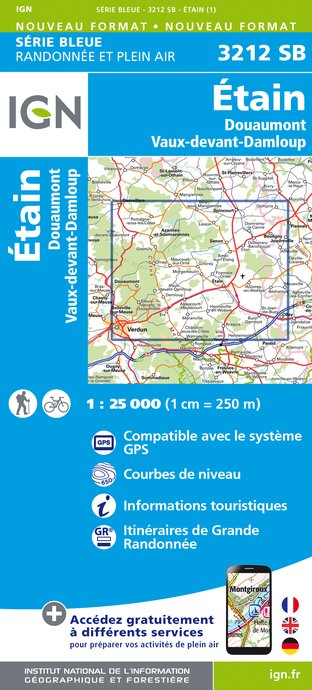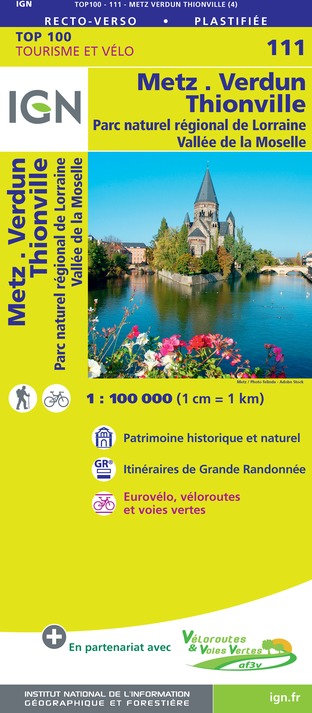Tours
Activities
Places of interest
Where to eat
Where to sleep
Explore the charms of Dieppe-sous-douaumont
Are you in charge of the destination?Situated in the heart of Meuse, Lorraine, Dieppe-sous-douaumont invites you to delve into its rich historical and natural heritage. This picturesque village is ideally surrounded by attractions that will delight history, nature, and culture enthusiasts. A short distance from Dieppe-sous-douaumont, you can explore remnants of World War I with unforgettable visits to Douaumont Fort and Douaumont Oss...See more
Walking around Dieppe-sous-douaumont
See more suggestionsExplore the walking circuits of Dieppe-sous-douaumont.
See more suggestionsWhat to do in Dieppe-sous-douaumont
See more suggestionsEnjoy unforgettable moments in Dieppe-sous-douaumont by booking activities for everyone.
See more suggestionsIGN cards

3212SB - ÉTAIN DOUAUMONT VAUX-DEVANT-DAMLOUP
Editor : IGN
Collection : TOP 25 ET SÉRIE BLEUE
Scale : 1:25 000
13.90€

111 METZ VERDUN THIONVILLE PNR DE LORRAINE VALLÉE DE LA MOSELLE
Editor : IGN
Collection : TOP 100
Scale : 1:100 000
8.40€

105 CHARLEVILLE-MÉZIÈRES VERDUN FÔRET DES ARDENNES VALLÉE DE LA MEUSE
Editor : IGN
Collection : TOP 100
Scale : 1:100 000
8.40€

D51-55 MARNE MEUSE
Editor : IGN
Collection : CARTES DÉPARTEMENTALES IGN
Scale : 1:150 000
5.90€

D54-57 MEURTHE-ET-MOSELLE MOSELLE
Editor : IGN
Collection : CARTES DÉPARTEMENTALES IGN
Scale : 1:150 000
5.90€

ALLEMAGNE
Editor : IGN
Collection : DÉCOUVERTE DES PAYS DU MONDE IGN
Scale : 1:800 000
7.00€

EUROPE
Editor : IGN
Collection : DÉCOUVERTE DES PAYS DU MONDE IGN
Scale : 1:2 500 000
7.00€

87055 - BATAILLE DE VERDUN
Editor : IGN
Collection : ÉVÈNEMENT
Scale : 1:75 000
8.50€
What to visit in Dieppe-sous-douaumont
See more suggestionsRelax in the parks of Dieppe-sous-douaumont.
See more suggestionsWhere to eat in Dieppe-sous-douaumont
See more suggestionsCome and taste typical dishes of Dieppe-sous-douaumont.
See more suggestionsWhere to sleep in Dieppe-sous-douaumont
See more suggestionsFind an ideal lodging in Dieppe-sous-douaumont.
See more suggestions
















































